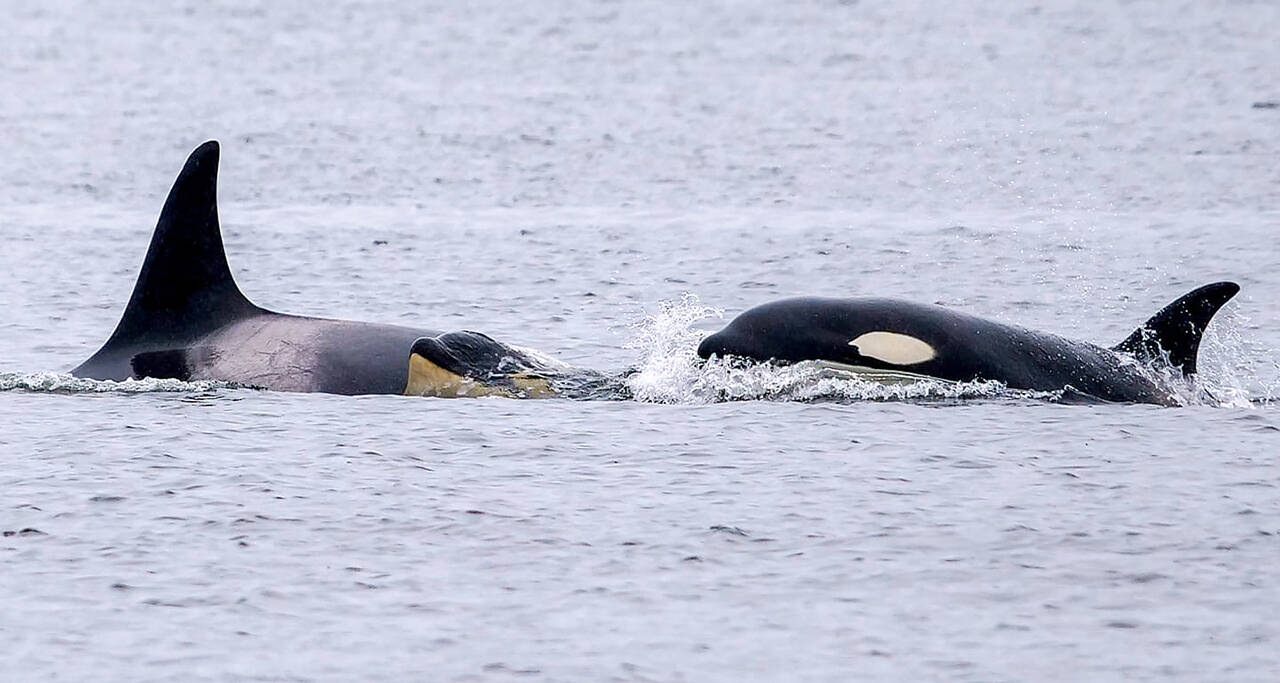If you see an orca this time of year, there’s a good chance it’s one of the transient variety.
Glimpses of transient orcas in the Salish Sea have increased over the last few years, with the Whidbey-based Orca Network recording about 100 more sightings this year as compared to the same time last year.
The plentiful population of killer whales — which are actually a type of large dolphin — likely owes its success to its diet of other marine mammals, mainly harbor seals, sea lions and porpoises. They are also known to munch on an occasional seabird or even a squid.
“Because those populations are so healthy, these are places where the whales know they can come in and find abundant food,” said Stephanie Raymond, a Seattle resident who is the program manager for the Orca Network.
In 2021, the whale-tracking nonprofit logged three times as many sightings of transient orcas – also known as Bigg’s killer whales – compared to southern resident orcas. Sightings of southern residents, an endangered community of fish-eating orcas, outpaced transients only during the months of November and December.
As recently as May 1, the same group of transient orcas were seen swimming back and forth between Holmes Harbor and Baby Island multiple times, presumably on the hunt for a meal. Those who are curious about recent sightings can visit Orca Network’s Facebook page. Sightings can be reported there, at orcanetwork.org or by calling 866-ORCANET (672-2638).
Bigg’s killer whales are currently booming in population, numbering around 400 individuals, according to the Georgia Strait Alliance. At the same time, the salmon-eating southern resident orcas are waning, with a total population of 74, according to the Marine Mammal Commission.
“They are successfully having calves in the way that southern residents aren’t,” Raymond said of the transients.
She added that it has been noteworthy to see transients traveling deeper and deeper into Puget Sound recently. She said she didn’t recall seeing T063 – also known as Chainsaw – swimming down into Central and South Puget Sound before, but now he is.
“Now we’re seeing these larger groups, the super pods, where there are four or five families traveling together or at least meeting up for a little bit,” she said.
Unlike gray whales or humpbacks, Bigg’s killer whales have no migratory pattern and have been spotted year-round in the Salish Sea. Raymond explained that while they have a wider range to swim in than the southern residents, it appears they may be drawn to the Pacific Northwest more and more for the abundance of harbor seals, which are easy prey.
Southern residents, meanwhile, have specific areas they must seek out for salmon. Chinook salmon, in particular, have been threatened by habitat loss.
Although they may look identical to the untrained eye, transients and southern residents have some subtle differences. Raymond said there are different characteristics of saddle patches and dorsal fins, as well as teeth. The two ecotypes speak separate languages and have cultures unique to each other. And they don’t interact – Raymond has even witnessed a pod of transient orcas and a pod of southern resident orcas traveling in opposite directions without acknowledging each other.
In fact, scientists estimate transients diverged from other killer whales to create their own ecotype about 700,000 years ago, according to the Smithsonian.
While Bigg’s killer whales appear to be faring better because of more plentiful prey, there is some hope for the southern residents. A few weeks ago, a video of a new calf in K pod emerged.
“That’s a very hopeful sign,” Raymond said. “That pod had not had another live birth since 2011.”
This story originally appeared in the Whidbey News-Times, a sister publication to The Herald.
Talk to us
> Give us your news tips.
> Send us a letter to the editor.
> More Herald contact information.

























